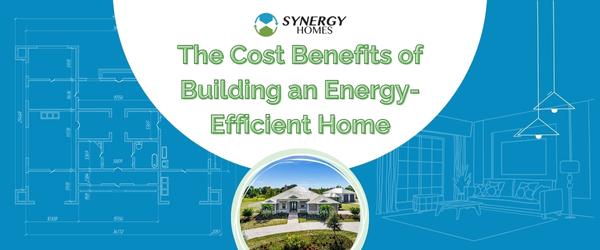Many in the home design industry have worked hard over the last decade to develop more energy efficient homes, and that hard work seems to be paying off. According to a 2020 study by the American Council for an Energy-Efficient Economy, more consumers than ever rated a home’s energy efficiency as their top priority in home buying. As you begin shopping for your next home, you may wonder what energy efficient home architecture truly looks like and what goes into making a home more energy efficient. There are actually five core design aspects that comprise the most energy efficient homes.
#1 – A Better Thermal Envelope
A home’s thermal envelope is what separates your home from the outside. Everything that serves to shield your living space from the outside air comprises the thermal envelope. That includes insulation and your windows and doors. The most energy efficient homes have insulation that helps to regulate the temperature inside your home. On those hot summer days, it keeps the Florida heat out while keeping the inside air nice and cool. In the winter months, your insulation keeps the chill out of your home. More efficient homes have proper insulation in both the walls and the attic. Some use house wraps to help protect the home from any air or moisture that might get in.
In addition to the insulation, energy efficient homes also have airtight windows and doors. Older homes often leak air out of the windows, but that can be addressed with better architecture. Energy Star rated windows offer better frame construction and stronger glass choices that help to eliminate heat or air conditioning loss. Many even feature multiple chambers for added efficiency.
#2 – Energy Efficient Appliances
Home appliances account for most of the energy use in a home, and building more efficient homes means integrating more efficient appliance systems like better HVAC systems, water heating capabilities, and small appliances like refrigerators, washers and stoves.
HVAC systems waste a lot of fuel. In fact, those manufactured before 1992 may waste up to 50% of their energy. New homes, though, can take advantage of better systems like heat pumps that cut fuel waste to as little as 1.5%.
Advanced water heating systems are also often integrated into a home’s architecture. Today, on-demand systems are the perfect way to ensure a home doesn’t use too much energy heating the water.
Energy Star rated small appliances are also incredibly helpful. They mean a savings of hundreds of dollars per year, and they’re the perfect complement to a beautiful new home.
#3 – Advanced Landscaping Techniques
Few people think of landscaping when they think about energy efficient homes, but the use of native plants and properly placed trees and shrubs actually help a home save energy. It can conserve the amount of water a home uses, and it could mean reduced heating and cooling costs thanks to the natural shade it creates. Just putting the home in the right place on the lot could have a lot to do with how efficient it is. After all, the last thing you want is the hot sun heating up the spaces where you spend the most time each day.
#4 – State of the Art Lighting
Many builders today look carefully at how to best introduce natural light into a home to help save energy throughout. Well placed windows could mean allowing the light to come in but not the heat of the day. Add that to energy efficient lighting fixtures throughout the home, and you have a well lit design that adds to its overall appeal.
#5 – A Space Efficient Footprint
Maybe the most important part of energy efficient home architecture, though, is the footprint of the home itself. Smaller houses are more efficient both to build and to run. Less land must be excavated to build them, fewer raw materials are needed to construct them, and the smaller footprint means less space to heat and cool. That doesn’t mean, though, you can’t have what you want in one of these homes. Good architects design these kinds of homes with the flexibility you need for your family to grow and change, and by adding various built in features, you may find you need less space overall.
While other things like alternative energy sources and using local or reclaimed materials can certainly go into creating a home that is more efficient, these energy efficient home design ideas are key to ensuring your footprint is smaller. Best of all is the fact that many builders are already using these ideas for great new designs.
Ready to explore a few energy efficient models? Check out our complete line of homes designed with a greener footprint in mind.

Comments are closed here.